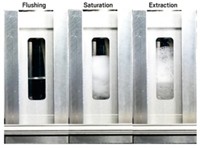Advertisement
Grab your lab coat. Let's get started
Welcome!
Welcome!
Create an account below to get 6 C&EN articles per month, receive newsletters and more - all free.
It seems this is your first time logging in online. Please enter the following information to continue.
As an ACS member you automatically get access to this site. All we need is few more details to create your reading experience.
Not you? Sign in with a different account.
Not you? Sign in with a different account.
ERROR 1
ERROR 1
ERROR 2
ERROR 2
ERROR 2
ERROR 2
ERROR 2
Password and Confirm password must match.
If you have an ACS member number, please enter it here so we can link this account to your membership. (optional)
ERROR 2
ACS values your privacy. By submitting your information, you are gaining access to C&EN and subscribing to our weekly newsletter. We use the information you provide to make your reading experience better, and we will never sell your data to third party members.
Analytical Chemistry
No Fuss, No Muss Mass Spec
New technique allows direct mass spectrometry at ambient conditions
by Celia Henry
October 18, 2004
| A version of this story appeared in
Volume 82, Issue 42

Imagine doing a mass spectrometric analysis directly on your skin. With a new ionization method called desorption electrospray ionization (DESI), such an analysis could soon be possible on a routine basis.
In DESI, an ionized stream of solvent--produced by an electrospray source--is sprayed on the surface of a sample at ambient temperature. No prior sample preparation is needed. The solvent clusters in the beam act as projectiles, knocking ions from the sample, which are then propelled to the mass spectrometer through a hose [Science, 306, 471 (2004)]. Thus, DESI takes sampling for mass spectrometry out of the vacuum chamber and moves it into the lab and, in principle, beyond.
"The fact that you can examine material on ordinary surfaces--cloth, leather--without any preparation and do this in ambient air makes this a striking new method," says Purdue University chemistry professor R. Graham Cooks, who led the study. Cooks predicts that the technique will be a "knockout winner" in forensic and public safety applications, including the analysis of dried blood, detection of explosives, and monitoring of chemical warfare agents. He also sees applications in drug metabolism studies and in two-dimensional surface analysis to locate the position of analytes in a sample matrix.
Using an electrospray source to produce the ionized solvent that acts as the primary-ion beam is "a completely novel concept," says Renato Zenobi, an analytical chemistry professor at the Swiss Federal Institute of Technology, Zurich. "Although the ultimate sensitivity and the mechanism for ion production are still being worked out, I believe this method will have great impact for the application of mass spectrometry to real-world samples."
Cooks and his colleagues, including postdoctoral associate Zoltán Takáts, have taken mass spectra of a variety of compounds, ranging from the small, nonpolar lycopene in tomatoes to large, polar peptides and proteins. They have also shown that drug molecules can be measured on the surface of the skin.
Although not necessary to obtain spectra, the solvent system--water or a water/methanol mixture--can be adjusted to optimize the signal for particular analytes. Changing the nature of the spray solution is simply like changing the reagent gas in a chemical ionization experiment, Cooks says. For example, they optimized detection of the explosive RDX by adding trifluoroacetic acid to the solvent.
Cooks and his colleagues are moving forward on several fronts with the DESI technology. They are doing experiments to understand the fundamental ionization mechanism. They also plan to couple DESI with the miniature mass spectrometer that Cooks has developed and start doing experiments outside the laboratory.




Join the conversation
Contact the reporter
Submit a Letter to the Editor for publication
Engage with us on Twitter